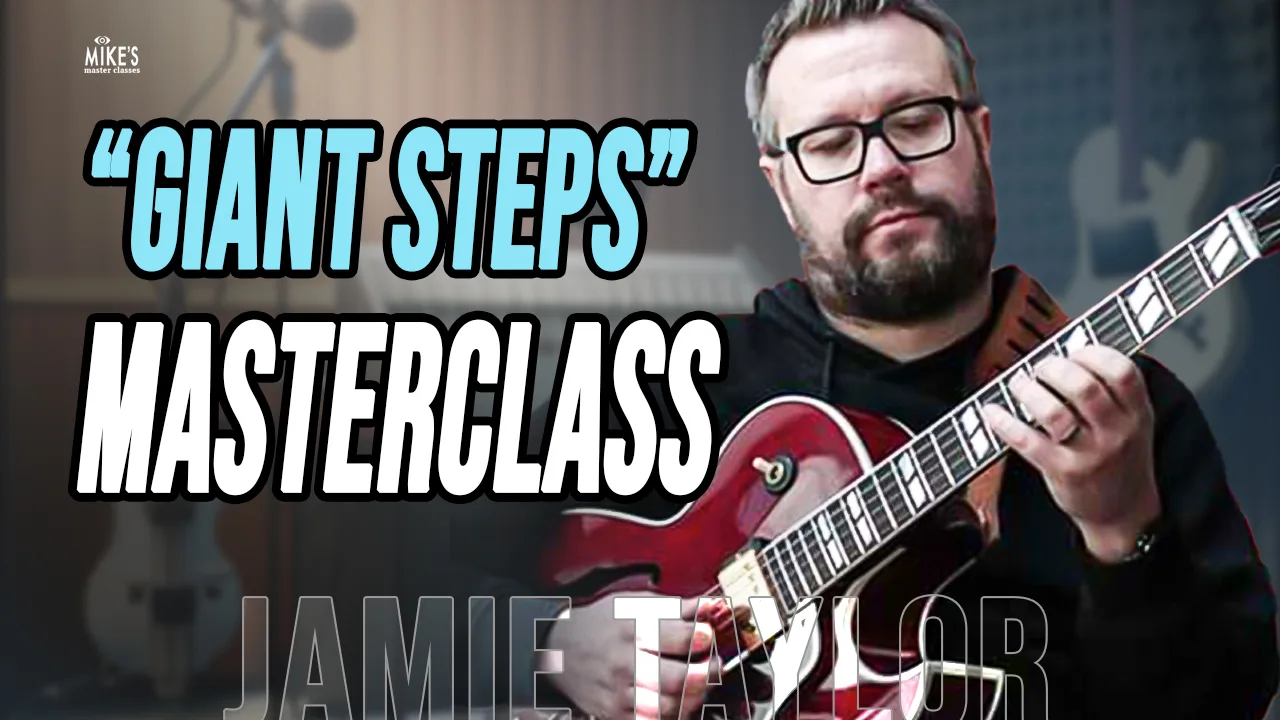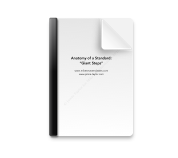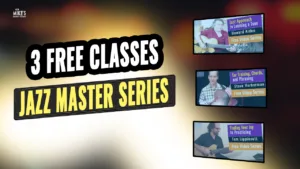Class aims:
- Assist with memorization of the melody and sequence
- Start to develop the necessary harmonic ‘close control’ to improvise on the tune
- Develop technique and fretboard awareness, via two purpose-built etudes based on the chord progression
At time of writing, this iconic piece by John Coltrane is almost sixty years old but, much like Everest and Kilimanjaro, it remains a perennial attraction for those in search of a challenge! Technically more of a jazz original than a standard, it’s a must know tune nevertheless.
This new, shorter, class is based around two purpose-built etudes of mine, and designed to develop thought processes and fretboard awareness that should help you get started on this tricky tune. Perhaps we could think of it as ‘first steps’ to “Giant Steps”!
(Note that this class clocks in at just over 30mins duration. I will still be producing the full-length classes in future as well, but flexible session lengths enable me to cover a wider range of topics. Do get in touch if you have any suggestions! JT)
As if it wasn’t tricky enough, musicians have played it in all keys and in virtually every kind of time signature and feel. Some, like Kenny Garrett, have increased the harmonic intensity even further; others, like Bill Frisell, have transformed it in to a more contemplative selection.
Whilst it’s probably not a tune to tackle until we have a few simpler standards under our belt, it needn’t be feared either. If you can play “Have You Miss Met Jones?”, you’re certainly ready to have a go at this one.
In the full 30m33s class:
- Two bespoke etudes are demonstrated at different tempos, then broken down into specific line constructions.
- We discuss harmonized scales as a means of improving fretboard knowledge.
- Pointers are given on how to memorize the progression and melody.
- As always, everything we discuss is fully notated and tabbed in the 11-page PDF that accompanies the class.
- Synchronized on-screen captions ensure that you can always see exactly what you’re hearing.
- For the first time in this package, I’ve also been able to create synchronized notation, so you can see a cursor traveling through the etude transcriptions in sync with my video performance.
Level-wise, “Giant Steps” isn’t the easiest piece, and you probably need to have a few simpler tunes under your belt before starting to tackle this one. Having said that, there’s certainly no need to be put off by its reputation – the emphasis here is very much on first principles. The class is mostly aimed at the intermediate player who knows a few tunes and feels ready for the next challenge.













Outstanding way to break into Giant Steps
Thanks again, Jamie! You present great information in your lessons here on Mike’s Master Classes, and every bit of that information is immediately translatable into playing. Your approach to Giant Steps offers new insight and helps students understand how to see the song in triads that capture the fast-paced changes of the tune. Then, students learn how to use melodic devices to make lines that are more expressive without losing the underlying chord tones. With those foundations, the door is now open to creating great improves to this challenging Coltrane composition. Another fine lesson from a great instructor!
by John Duncan